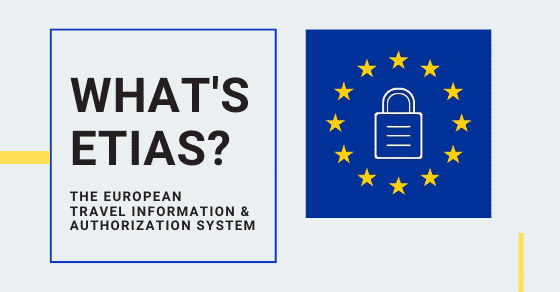- Brexit has brought on many changes for Britons, including those who own property in Spain. Learn more about how Brexit affects Spanish property owners here.
Spain is famed for its beaches, pleasant year ‘round temperatures, and high quality of life — which are all factors that would make anyone want to buy a property and live there.
However, after Brexit went into effect on January 1st of this year, many UK citizens who are also Spanish property owners are worried about the implications of the UK withdrawing from the European Union.
In this article, we’ll be taking a closer look as to how Brexit affects Spanish property owners, residents, and why the ETIAS Europe will be an extremely important program for EU property owners starting in 2022.
What are the changes for current property owners?
It’s no secret that many EU-based Britons are starting to feel the Brexit effect, and naturally, have many questions regarding what changes are happening after the UK withdrew from the EU – in particular, what changes will affect those who own property in the EU.
According to data from Banco de Espana, the central bank of Spain, UK citizens are the largest group of foreign buyers of holiday homes and apartments in Spain, way ahead of the Germans, French, and Moroccans.
If you currently own property in Spain, good news: Brexit will not affect your rights as a property owner in Spain. This is because property rights are not linked to residency status, and all foreign homeowners have the same rights as the locals.
However, there are two important changes to be aware of. The rate of non-resident income tax for British nationals has increased from 19% to 24% and came into effect on January 1st, 2021.
Likewise, the rules regarding how long you can stay in Spain have changed. As a Briton, you can no longer stay more than 90 days over a 180-day period, and this ‘calendar’ starts from the moment that you enter any EU country. For example, if you take the Eurostar high-speed train from London to Paris and spend a week in France before heading to Spain, those seven days would count against your 90 day limit.
Once your tally of 90 days is up, you would need to wait another 90 days before being allowed to enter the EU (and Spain) again. To negate the effects of this new law, we recommend visiting Spain in shorter bursts (i.e. two weeks instead of two months at a time) so that you have plenty of time in your ‘travel bank’.
What are the changes for residents of Spain?
If you are a Briton with official residence in Spain — i.e. you have a Spanish residence permit, called the Tarjeta de Identidad Extranjero — your rights in Spain and the EU do not change after Brexit.
Thanks to a law that was passed in July 2020, the Spanish government introduced a new residency card for citizens from non-EU countries who reside in Spain. Referred to as a TIE (tarjeta de identidad de extranjero), the holder has a right to live in Spain without any limits.
What is the ETIAS for Europe and why do I need one as a Spanish property owner?
Starting in 2022, the European Union is going to get a major overhaul of its visa policies. One of the most important developments is the ETIAS, which stands for European Travel Information and Authorization System, and is a new type of visa waiver that grants the owner entry into the European Union.
The ETIAS will replace the Schengen Zone requirements currently in place. Citizens of countries who currently enjoy visa-free access to the European Union, such as the United Kingdom, Canada, Japan, the United States, and Australia, among others, will need to apply for the ETIAS. The good news is that the ETIAS is valid for 3 years (or until the holder’s passport expires, whichever comes first) and is good for both touristic and business purposes.
The ETIAS is valid for 90 days and covers all countries in the Schengen zone. This means that you can choose to spend all 90 days at your property in Spain, or enjoy a 3-week vacation through Italy, Germany, and Austria without the need to re-apply every time you wish to cross a border.
How to apply for the ETIAS
The process for applying for an ETIAS is extremely simple and should only take a few minutes to do so. Applying for an ETIAS is done entirely online and from the comfort of your own home — all you need is a device with internet access (such as a smartphone or personal computer).
The ETIAS will have an application form that asks basic questions about the traveler (first and last name, date of birth, contract information, gender); their passport (serial number, issue date, expiration date, nationality); and the traveler’s plans in Europe. There will also be a yes/no section regarding the traveler’s health history, criminal record, and security questions.
Once the application has been filled out, all you need to do is pay the processing fee and submit it for consideration. The majority of ETIAS applications are approved within a few hours, although it may take up to three business days during high season.





